Growing a feathery Kalanchoe on the windowsill, the florist becomes the owner of not just a decorative flower, but a natural pharmacy in his own house. But in order for the spectacular look to be harmoniously combined with useful properties, it is necessary to know the features of growing a plant at home.
Material Content:
Basic growing requirements
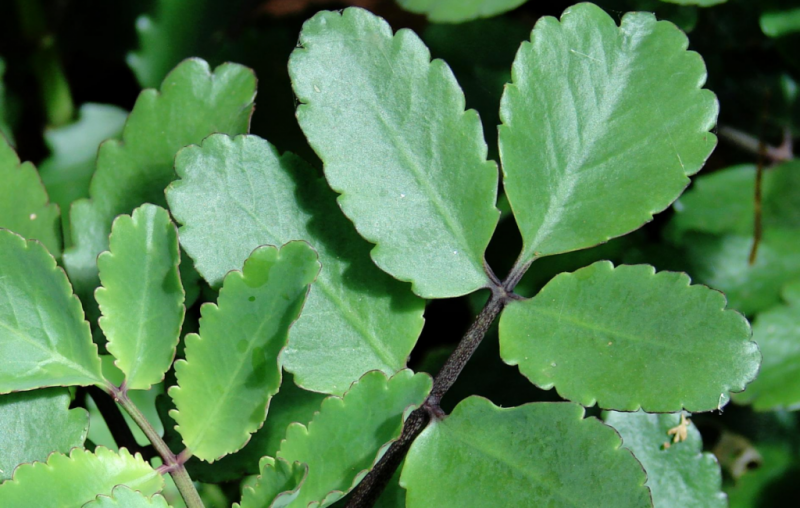
Having brought the flower of Kalanchoe to the house, the florist should immediately provide the plant with optimal conditions.
Ground and pot requirements
Undemanding in nature, succulents like well-drained, fertile soil, which can be prepared independently or purchased in a store. In the first case, it is enough to combine humus, garden soil and coarse sand in equal volumes. In the absence of time, you can limit yourself to buying a special substrate for succulents. The main requirement of the flower to the pot is the presence of large drainage holes that prevent stagnation of moisture and the beginning of the development of rot.
Location, lighting
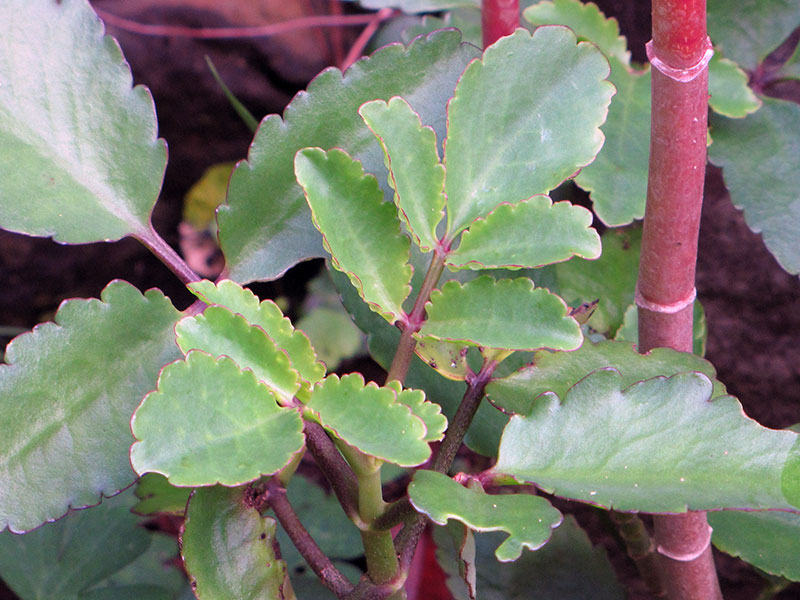
Succulents love bright light, but can suffer from direct sunlight. For this reason, the flower will best develop on the windowsills of the eastern and western windows. After flowering, it is worth moving the Kalanchoe to a shaded place. During the heating season, it is recommended to install the pot away from heating appliances that dry the air and raise the temperature to critical.
Temperature
Kalanchoe pinnate refers to heat-loving plants that grow well at room temperature. In summer, the optimal temperature values can vary from 22 to 27 ° C, and in winter - from 16 to 18 ° C. Critical temperatures, above and below which the plant feels unwell, are considered 30 and 10 ° C, respectively.
Air humidity
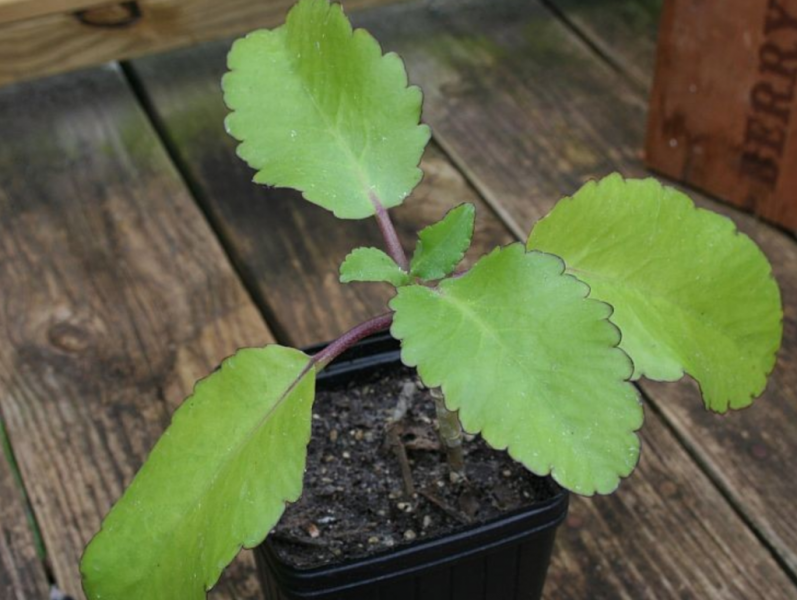
Despite the fact that the flower loves an increased level of humidity, it does not need additional spraying. In the winter, a similar procedure can even provoke the development of the disease. Kalanchoe responds well to a monthly shower during the active growing season. As a hygienic procedure, allowing you to remove accumulated dust from the leaves of succulents, you can wipe the shoots with cotton pads.
Home Care
Successful flower cultivation in an apartment environment involves not only creating optimal conditions for maintenance, but also conducting comprehensive care. Since the plant has a non-capricious nature, caring for Kalanchoe is very simple.
Watering
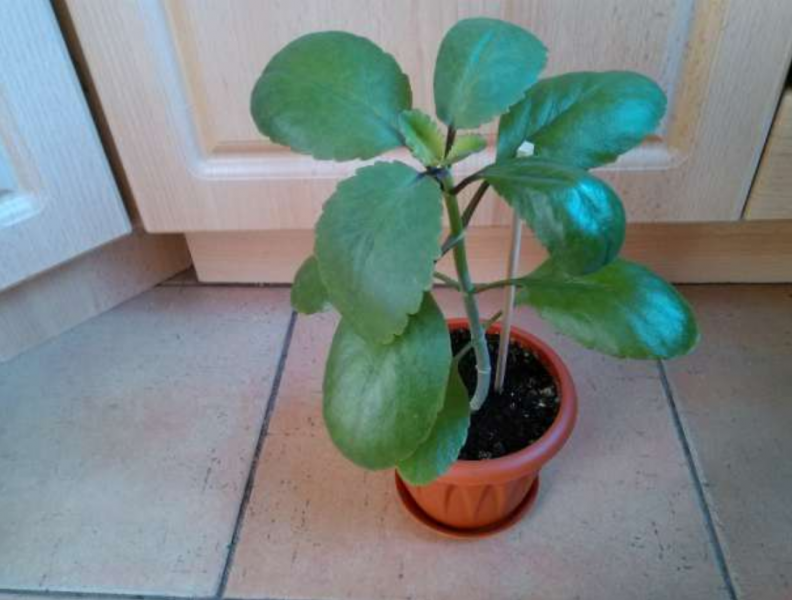
Succulent, due to its ability to accumulate moisture in leaves, suffers a relatively painless absence of watering for a period of two to three weeks, which makes it an ideal flower for people often leaving and busy. For Kalanchoe, the bay, in which water stagnates in the roots, is much worse. The plant needs moderate moisture, between portions of which the soil will have time to dry out.
Fertilizer and fertilizer
During the period of active growth and flowering, Kalanchoe is fed twice a month. With a slowdown in internal processes, the frequency of top dressing decreases, and in winter it stops altogether. To enrich the soil, fertilizers are used for succulents or flowering plants with an underestimated consumption rate twice that indicated on the package. A high concentration of macro- and microelements in the substrate adversely affects the condition of the plant.
Flowering and pruning Kalanchoe
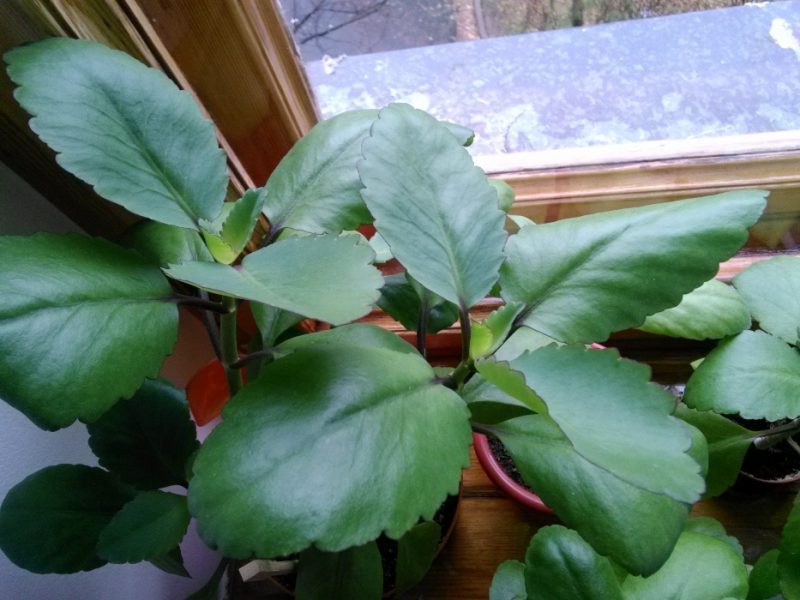
The flowering phase of feathery Kalanchoe, as a rule, occurs in the spring-summer period. However, with artificial prolongation of daylight and maintaining the temperature at 18 ° C, it is possible to become the owner of flowering succulent even in winter. After the completion of the phase, the peduncle is removed, the old and stalked shoots are shortened. Also, to create a well-groomed type of succulent, pinching of the shoots is carried out, which stimulates branching and does not allow the flower to stretch.
Transplant at home
Due to the intensive pace of development, it is recommended to transplant the flower every year in early spring into a more spacious container with a fresh substrate. A pot is selected with a diameter 2 cm larger than the same parameter of the old tank. As drainage, gravel or expanded clay is placed at the bottom. Then, using the transshipment method, very carefully so as not to damage the fragile leaves, a flower with an earthen lump is established and sprinkled with fresh soil mixture.
Read also:stefanotis at home
Propagation Features
Propagation of Kalanchoe is carried out by vegetative methods.
Kids

On the cirrus Kalanchoe leaf belonging to the “viviparous” plant, children are formed, which the adult succulent discards on its own. Miniature rosettes that have fallen on the soil are rooted near the maternal specimen, and then are deposited in separate containers.
Leaf
You can propagate a flower with a leaf throughout the growing season, while:
- A leaf plate is cut from the mother plant, which is kept for several hours in the air to form a protective film.
- The separated shoot is buried in a moistened substrate and covered with a cap.
- After 7-14 days, rooting is observed.
- When your own shoots begin to develop on the rooted plant, a new specimen is planted in a container for an adult Kalanchoe.
Root offspring
The method is used on an adult flower, which is subject to rejuvenation.
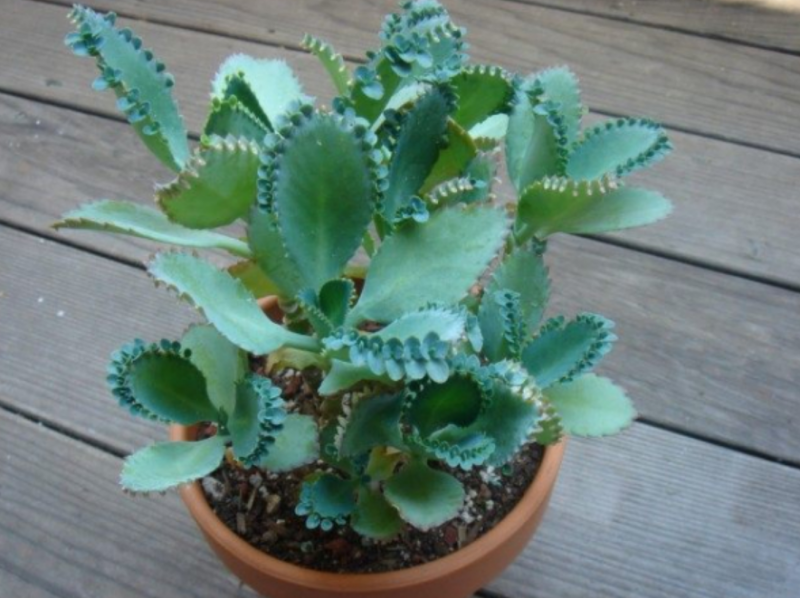
During:
- The tops of the central stem and lateral shoots are pinched, which stimulates the appearance of root shoots.
- When the root shoot reaches a height of 7 cm, it is carefully detached so that the roots remain undamaged.
- The plant is planted in an individual pot with a fertile substrate.
Read also:Kalanchoe Degremon
Pests, diseases and treatments
Succulent has a good resistance to damage by harmful insects and pathogens.
However, keeping the flower in unsuitable conditions and improper care of it can lead to the following diseases and pests:
- Gray rot is a fungal disease that affects the root system of a plant due to systematic overflows and stagnation of moisture. To save the affected specimen, you should remove it from the old soil, and then remove the roots with signs of the disease. Plant succulent in fresh soil and treat with fungicide.
- Powdery mildew is another fungal disease, the development of which is noted with too high a level of humidity. To kill the infection, it is recommended to make the air drier and spray the culture with a fungicidal preparation.
- Aphids are a sucking pest, the long presence of which can lead to the death of succulents due to the inability to feed.
- Spider mite - a pest is observed with too dry air and harms the leaf plates of the flower.
- Scale - insects, because of which the flower often lags in development and does not bloom.
At the first signs of pest activity, Kalanchoe should be treated with an insecticidal solution.
So, the undemanding Kalanchoe pinnate, often used in folk medicine, with minimal care can easily become a permanent inhabitant of the apartment window sill.












